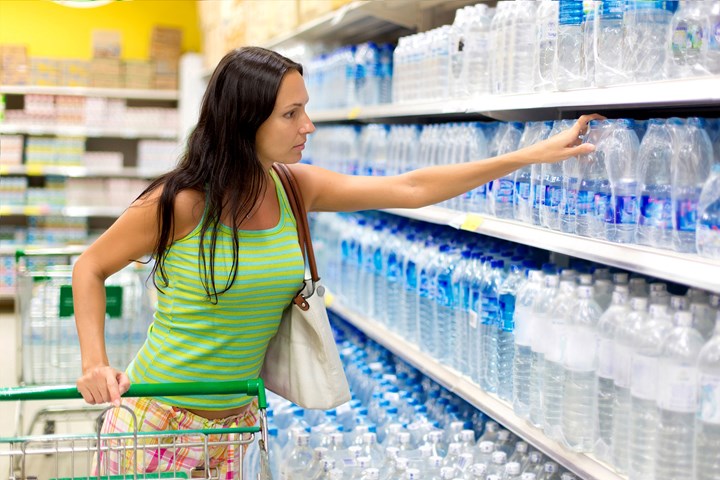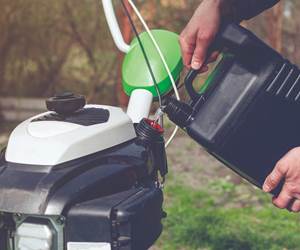Latest Data on Bottled Water Shows Continued Strong Growth
Bottled water’s volume surpassed soft drinks for the first time in 2016 and has done so every year since.

We recently heard from the International Bottled Water Association (IBWA) that new data from the Beverage Marketing Corporation (BMC) shows that bottled water has “reached new peaks in both volume consumed and sales”. IBWA has been an authoritative source of information on all types of bottled water—from spring, mineral, and purified to artesian and sparkling since its founding in 1958. BMC is a leading source of U.S. and global data and consulting for beverages ranging from bottled water and carbonated soft drinks, to beer, fruit beverages and new age beverages.
BMC’s latest data shows that bottled water’s total volume sold in 2022 was 15.9 billion gallons, its highest volume ever, surpassing carbonated soft drinks for the seventh year in a row. In terms of retail dollars, 2022 sales approached $46 billion, up from $40.8 billion in 2021. For more than a decade, consumers have been increasingly choosing bottled water instead of less-healthy packaged drinks. Bottled water’s volume surpassed soft drinks for the first time in 2016 and has done so every year since.
According to BMC’s editorial director John G. Rodwan, “Numerous qualities account for bottled water’s unceasing resonance with U.S. consumers, including its associations with healthfulness, convenience, safety, and value. Consumers’ thirst for beverages that offer benefits beyond refreshment alone also contributed to the fundamental hydrating beverage’s rise in the beverage standings. Bottled water’s zero-calorie status and its lack of artificial ingredients appeal to many consumers. Even where tap water may be safe and readily available, people may prefer bottled water, which they often believe tastes better.”
Americans consumed, on average, 46.5 gallons of bottled water in 2022, compared to 36 gallons of soda. Consumer demand for bottled water has significantly contributed to the industry’s growth (30% since 2012), as people continue to switch from other less-healthy packaged drinks to bottled water. So much so, that nine out of 10 Americans (91%) want bottled water to be available wherever other drinks are sold, according to a survey conducted on behalf of the IBWA) by The Harris Poll.
Said IBWA’s v.p. of communications Jill Culora, “People are choosing to drink bottled water because it is a healthy beverage choice, having zero calories and no caffeine or additives, and it has the added benefit of packaging that is 100% recyclable. Not only are bottled water containers 100% recyclable (including the cap) but they also use much less plastic than soda and other packaged beverages.”
While the health benefits are a definite factor in opting for bottled water vs. other beverages as shown by the data, this editor and her colleagues respectfully have doubts, at least for the time being, about the latter part of Ms. Culora’s statement. As colleague Matt Naitove put it, “I don't imagine that anyone chooses bottled water over a carbonated beverage because the water bottle uses less plastic.” Still, IBWA shares some interesting data and comments that pertain to recyclability of plastic water bottles.
▪ On average, soda containers use 252% more PET plastic than bottled water containers (22.2 grams vs. 8.8 grams for 16.9-ounce containers). Soft drinks and other sugary beverages need thicker plastic containers due to their carbonation and/or bottling processes.
Even with continuing growth and increased consumption, bottled water still has the smallest impact on the environment—thanks to the fact that it has the smallest water and energy use footprint of any packaged beverage. On average, only 1.39 liters of water (including the 1 liter of water consumed) and 0.21 mega joules of energy are used to produce 1 liter of finished bottled water.
▪ Most bottled water is packaged in 100% recyclable PET and HDPE, plastics most recognized by consumers as being recyclable and the most recycled plastics in the world. Bottled water’s recyclability distinguishes it from other common plastic products that are truly “single-use,” such as non-recyclable plastic items (e.g., straws, cutlery, and plates); certain food and goods packaging (e.g., film, heat-sealed and multi-layered laminate bags) and containers (e.g., non-PET, HDPE, and PC bottles and tubs). In addition, PET plastic bottled water containers are the most recognized by consumers as being recyclable, which is likely the reason why they are the most recycled containers in U.S. curbside recycling programs. PET plastic bottled water containers are a valuable resource because they can be recycled and used over and over again.
▪ Recycling facilities know that there is a huge industry demand for post-consumer PET and HDPE. Many bottled water companies use recycled PET and HDPE to create new bottles, which helps to reduce their environmental impact. Moreover, bottled water drinkers recycle more often than drinkers of other beverages. Of all the PET containers recycled through curbside collections systems, bottled water containers make up approximately 49%. Empty bottled water containers should always be returned or placed in a recycling bin, but when they are not, they make up 3.3% of all drink packaging that ends up in landfills, and only 0.02% of all landfill waste.
▪ Studies have shown that bottled water containers are also not a major source of ocean pollution and microplastics. The vast majority of ocean plastic comes from sources other than the United States. In fact, if the U.S. were to completely eliminate all plastic use, the effort would only result in a 0.25% reduction of ocean plastics, data from Oxford University’s Our World In Data website shows. A striking statistic is that bottled water accounts for less than 1.58% of all plastics used in the U.S., which means we are talking about 1.58% of 0.25%.
Related Content
Prices Up for PE, PP, PS, Flat for PVC, PET
Trajectory is generally flat-to-down for all commodity resins.
Read MoreImproving Twin-Screw Compounding of Reinforced Polyolefins
Compounders face a number of processing challenges when incorporating a high loading of low-bulk-density mineral filler into polyolefins. Here are some possible solutions.
Read MorePrices for PE, PS, PVC, PET Trending Flat; PP to Drop
Despite price increase nominations going into second quarter, it appeared there was potential for generally flat pricing with the exception of a major downward correction for PP.
Read MorePolyethylene Fundamentals – Part 4: Failed HDPE Case Study
Injection molders of small fuel tanks learned the hard way that a very small difference in density — 0.6% — could make a large difference in PE stress-crack resistance.
Read MoreRead Next
People 4.0 – How to Get Buy-In from Your Staff for Industry 4.0 Systems
Implementing a production monitoring system as the foundation of a ‘smart factory’ is about integrating people with new technology as much as it is about integrating machines and computers. Here are tips from a company that has gone through the process.
Read MoreMaking the Circular Economy a Reality
Driven by brand owner demands and new worldwide legislation, the entire supply chain is working toward the shift to circularity, with some evidence the circular economy has already begun.
Read More
























